Abstract
Gynecomastia may occur as a normal physiologic development at certain ages or as a result of a variety of pathological conditions. An outbreak of gynecomastia was investigated at two processing centers of the Immigration and Naturalization Service (INS) between December 2, 1981, and May 14, 1982. At the Fort Allen Service Processing Center, Puerto Rico, gynecomastia was initially detected in 77 of 540 Haitian male entrants (14 percent) and in only 6 of 186 male employees of the center (3 percent) who were 18-50 years old; the difference in prevalence was statistically significant. At the Krome North Service Processing Center in Miami, Fla., gynecomastia was initially detected in 52 of 512 Haitian males 18-50 years old (10 percent). Two case-control studies did not demonstrate an association between gynecomastia and a number of factors that might have been related to an exogenous estrogen or to a substance with an estrogenic effect. Estrogen or estrogen-like substances were not found in food, water, or environmental samples. When the populations were rescreened several months later, 76 of the persons with gynecomastia detected in the first screening had had total or partial remission. Persons with remission had arrived earlier--a mean of 21.6 days for those at Fort Allen and 36.7 for those at Krome--than did those with newly detected gynecomastia and those with continuing cases. The difference in arrival dates was significant (P less than .005 for Fort Allen and P less than .001 for Krome). These results, in view of nutritional deprivation in Haiti, suggest that these cases may have been an outbreak of refeeding gynecomastia.
Full text
PDF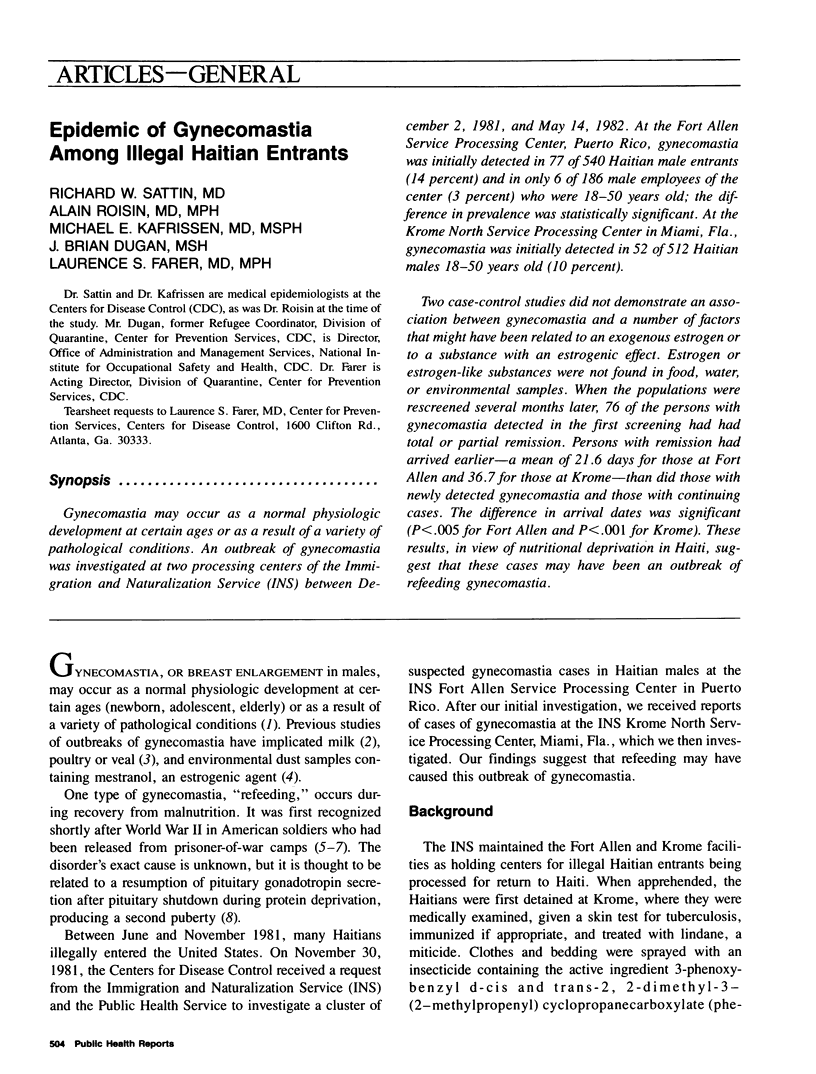

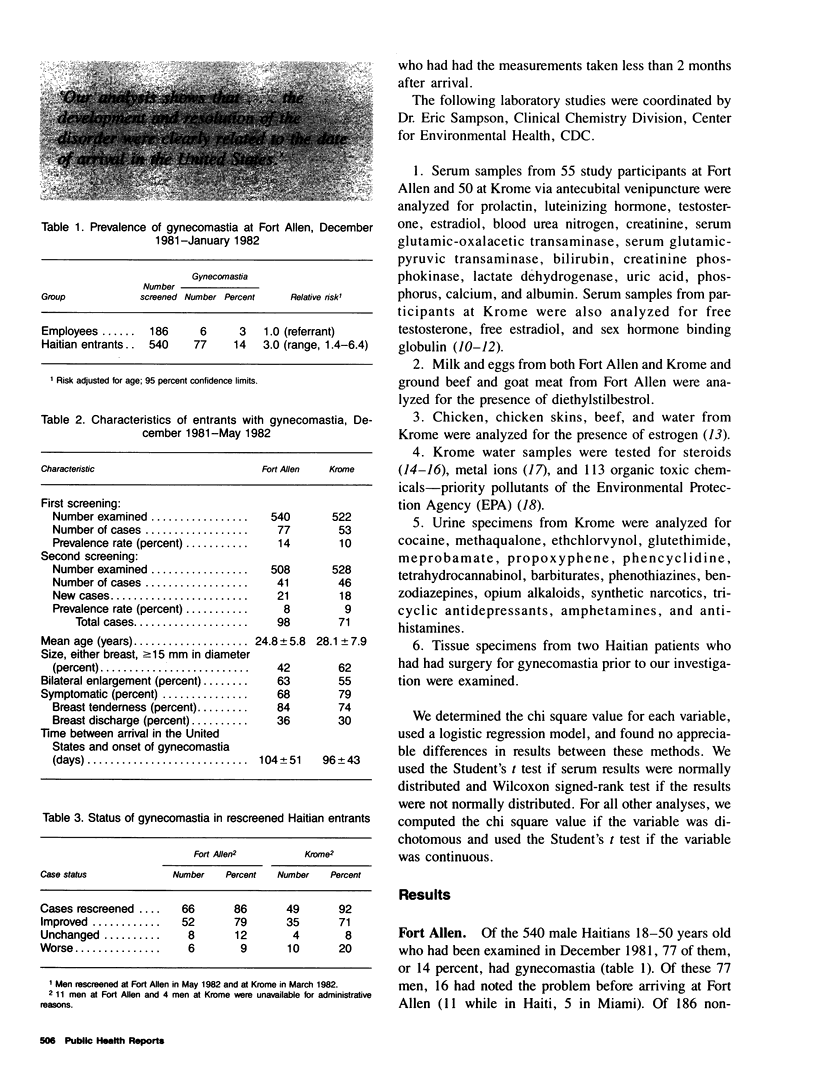
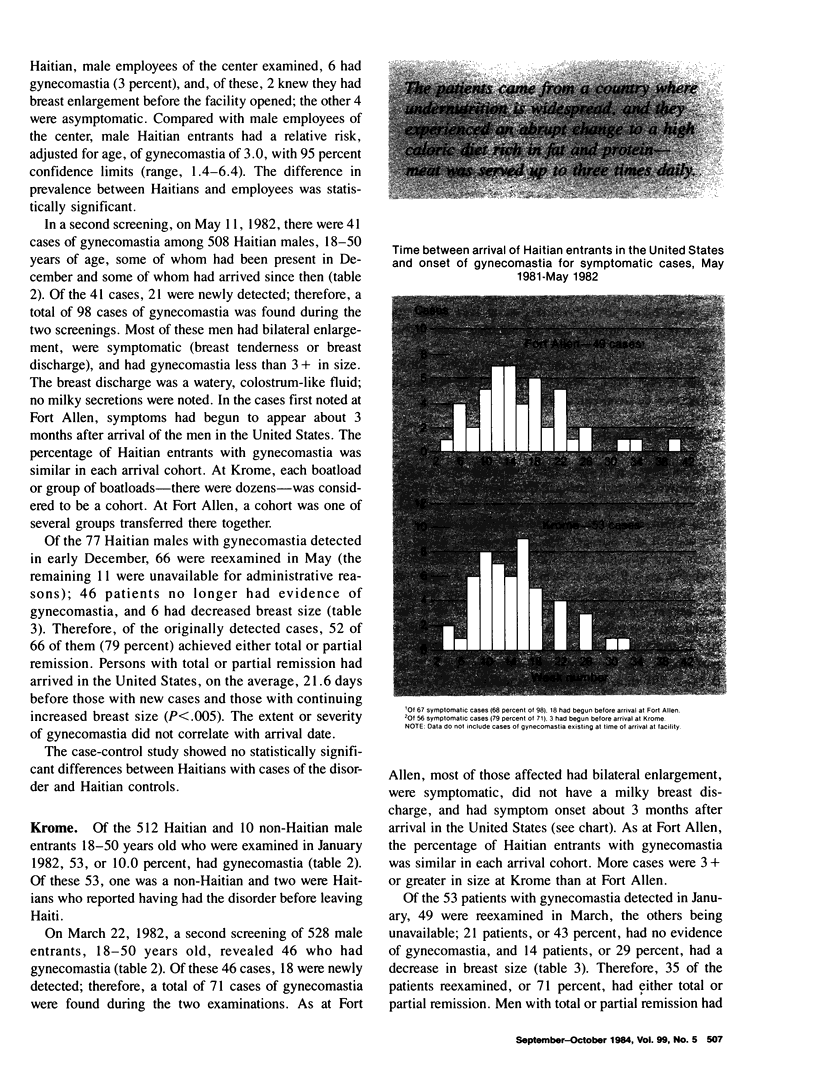
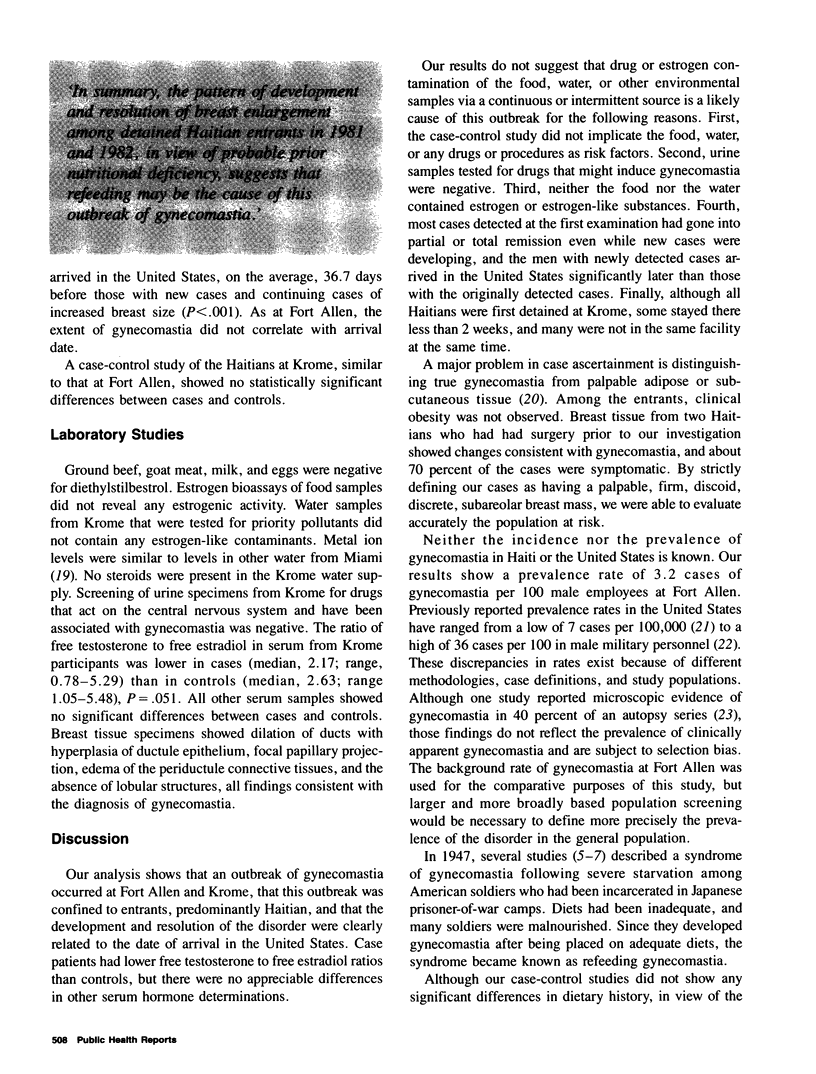
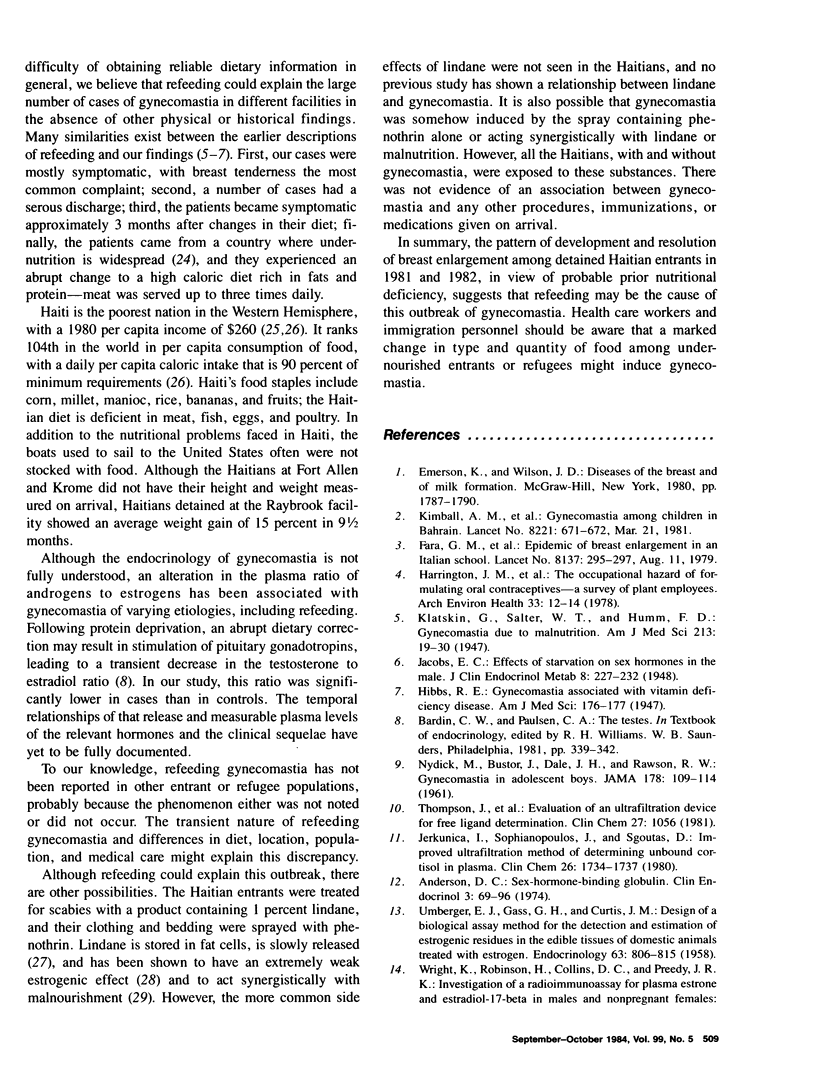
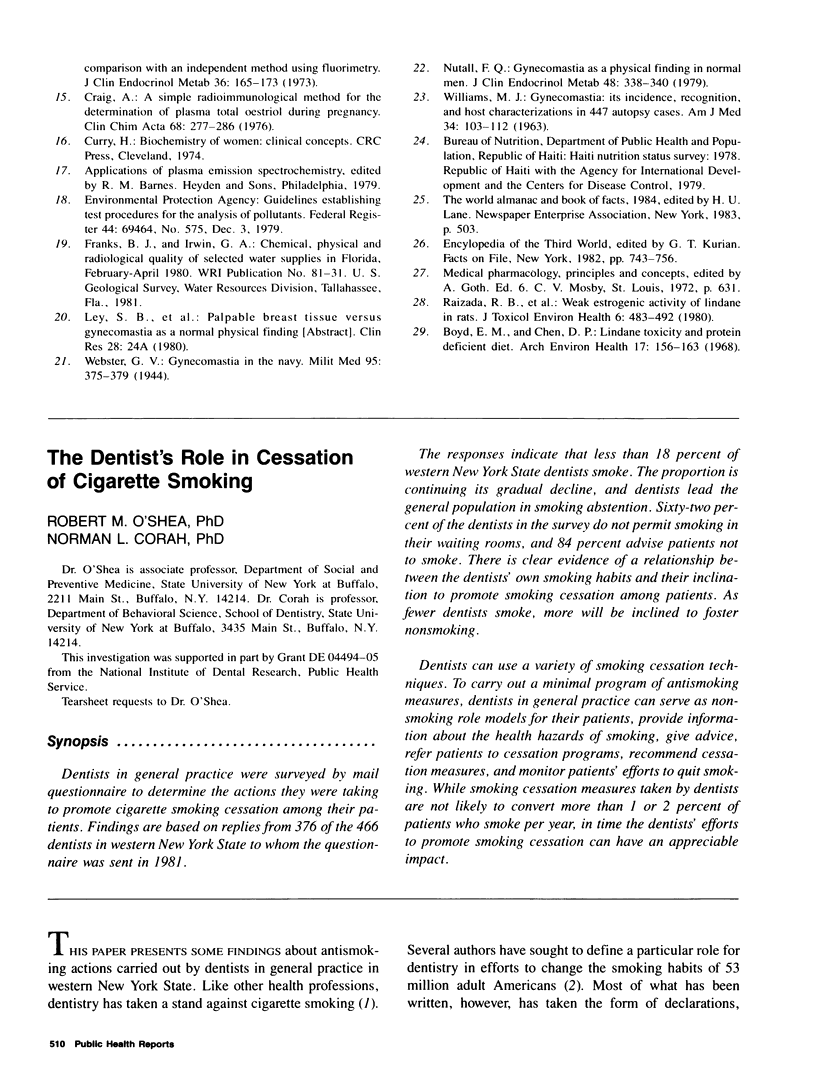
Selected References
These references are in PubMed. This may not be the complete list of references from this article.
- Anderson D. C. Sex-hormone-binding globulin. Clin Endocrinol (Oxf) 1974 Jan;3(1):69–96. doi: 10.1111/j.1365-2265.1974.tb03298.x. [DOI] [PubMed] [Google Scholar]
- Boyd E. M., Chen C. P. Lindane toxicity and protein-deficient diet. Arch Environ Health. 1968 Aug;17(2):156–163. doi: 10.1080/00039896.1968.10665207. [DOI] [PubMed] [Google Scholar]
- Craig A. A simple radioimmunological method for the determination of plasma total oestriol during pregnancy. Clin Chim Acta. 1976 May 3;68(3):277–286. doi: 10.1016/0009-8981(76)90392-2. [DOI] [PubMed] [Google Scholar]
- Harrington J. M., Stein G. F., Rivera R. O., de Morales A. V. The occupational hazards of formulating oral contraceptives--a survey of plant employees. Arch Environ Health. 1978 Jan-Feb;33(1):12–15. doi: 10.1080/00039896.1978.10667301. [DOI] [PubMed] [Google Scholar]
- Jerkunica I., Sophianopoulos J., Sgoutas D. Improved ultrafiltration method for determining unbound cortisol in plasma. Clin Chem. 1980 Nov;26(12):1734–1737. [PubMed] [Google Scholar]
- Nuttall F. Q. Gynecomastia as a physical finding in normal men. J Clin Endocrinol Metab. 1979 Feb;48(2):338–340. doi: 10.1210/jcem-48-2-338. [DOI] [PubMed] [Google Scholar]
- Raizada R. B., Misra P., Saxena P., Datta K. K., Dikshith T. S. Weak estrogenic activity of lindane in rats. J Toxicol Environ Health. 1980 May;6(3):483–492. doi: 10.1080/15287398009529867. [DOI] [PubMed] [Google Scholar]
- UMBERGER E. J., GASS G. H., CURTIS J. M. Design of a biological assay method for the detection and estimation of estrogenic residues in the edible tissues of domestic animals treated with estrogens. Endocrinology. 1958 Dec;63(6):806–815. doi: 10.1210/endo-63-6-806. [DOI] [PubMed] [Google Scholar]
- WILLIAMS M. J. Gynecomastia. Its incidence, recognition and host characterization in 447 autopsy cases. Am J Med. 1963 Jan;34:103–112. doi: 10.1016/0002-9343(63)90044-5. [DOI] [PubMed] [Google Scholar]


